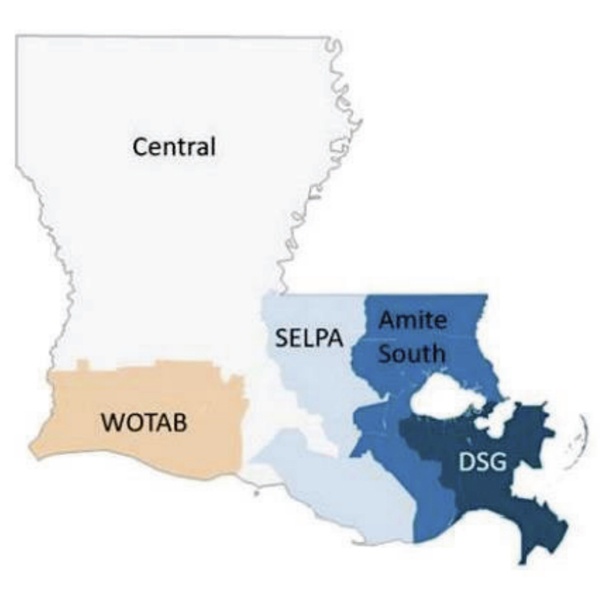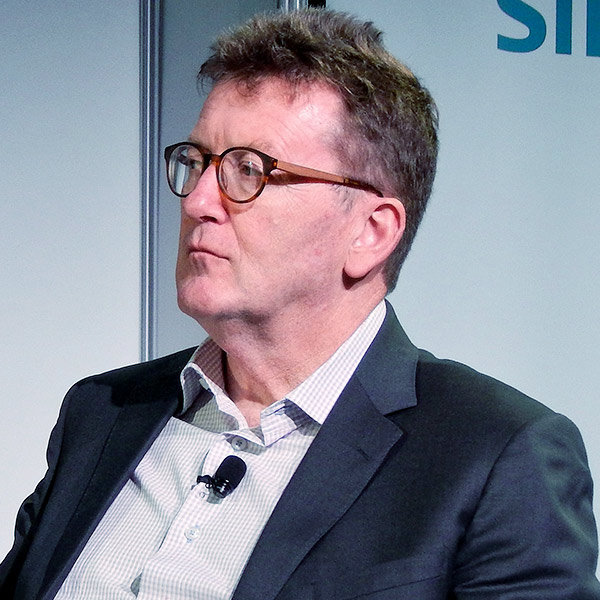Switching to LED streetlights can help cities reduce a significant source of greenhouse gas emissions, but an organization concerned about the health impacts of LEDs has petitioned Nevada regulators to halt installation of the streetlights.
An Oregon-based nonprofit, the Soft Lights Foundation, filed a petition last month with the Public Utilities Commission of Nevada. The petition asks PUCN to require Nevada utilities to wait for FDA approval of LED products before selling or installing LED streetlights.
“LED light has been shown to cause significant negative health effects,” said the petition, which was signed by Soft Lights President Mark Baker.
The petition also asks the commission to require utilities to include a warning on their websites about health impacts of LED lights and a statement that the lights are not FDA approved. Quoting state law, the petition said the commission has the authority to regulate utilities and has a duty to “protect, further and serve the public interest.”
In a response filed Aug. 17, PUCN staff recommended that the commission reject the Soft Lights petition, saying the group’s request “invites ad hoc rulemaking.” That’s the adoption of a regulation without following the state’s formal rulemaking requirements.
“No cause — even those pursued by the most devoted of supporters — justifies skirting NRS Chapter 233B [rulemaking requirements],” PUCN staff wrote.
PUCN staff also said that because the period to comment on the petition ended Aug. 17, any response filed by Soft Lights should be stricken.
In response, Baker tried to email commission members directly. In an email shared with NetZero Insider, Baker told commissioners that he expected PUCN staff to recommend further study of LED streetlights while following rulemaking procedures.
Baker also emailed state lawmakers to share Soft Lights’ concerns.
Growing Number of LEDs
As of 2018, there were 49.7 million street lighting systems installed in the U.S., and 24.2 million of those — or roughly half — used LED products, according to a 2020 DOE report. Before the emergence of LED street lighting, most streetlights in the U.S. used high-pressure sodium technology, DOE said.
Converting the remaining streetlights to LED would save an estimated 25.6 TWh of site electricity, the report said.
In Reno, a recent analysis found that streetlights account for 23% of the city’s GHG emissions. Switching to LED streetlights would reduce those emissions by 62%, according to a release this month from nZero, a company that partnered with the city to create a dashboard of the government’s GHG emissions.
The city owns about a quarter of the streetlights in Reno — around 2,700 lights — and most are now LEDs, according to Suzanne Groneman, the city’s sustainability program manager. The remaining streetlights are owned by NV Energy, which plans to convert them to LED over the next three to five years, Groneman told NetZero Insider.
Some cities are going a step further by pairing LED streetlights with smart controls, which allow them to dim the lights on a set schedule. LED streetlights with smart controls cut energy use by 60% to 80%, according to a release from RealTerm Energy and Ubicquia. The companies recently completed smart street lighting projects in 25 cities.
But Soft Lights Foundation contends that LED light is harmful, allegedly causing conditions such as migraines, seizures, anxiety and eye damage.
According to the Soft Lights petition, the Radiation Control for Health and Safety Act of 1968 directed the FDA to regulate electromagnetic radiation, including visible light emitted by electronic products. The FDA website says the agency’s Center for Devices and Radiological Health regulates devices, including cell phones, television receivers, microwave ovens, tanning booths and laser products.
But the FDA has yet to regulate LED lighting products, Soft Lights said in its petition.
Baker, who has a degree in electrical engineering, said he launched the Soft Lights Foundation “when LEDs started appearing everywhere.” Baker and the group’s members carry out the work of the foundation, which receives no funding, Baker told NetZero Insider. In addition to LED streetlights, another focus of the group is to “ban blinding LED headlights.”
In June, Soft Lights petitioned the FDA to regulate LED light products. The group has also submitted comments to the DOE regarding LED lights and filed a complaint with the Federal Highway Administration.
Similar to its petition filed with the PUCN, Soft Lights asked the California Public Utilities Commission in June to require FDA approval of LED streetlights. In a July 18 letter, Docket Office Supervisor Michael Oliveros rejected the complaint “because it fails to specify a violation of any law or any order or rule of the commission.”
Blue Light Controversy
As installation of LED streetlights started to accelerate, the American Medical Association in 2016 warned about “adverse consequences” of “improper LED technology.”
The AMA’s concern was focused on high-intensity LED streetlights that emit a large amount of short-wavelength blue light, which may increase nighttime glare and create a hazard for drivers. In addition, blue-rich LED light may disrupt sleep, the AMA said. The association recommended that communities shield LED lighting and use the lowest emission of blue light possible to reduce glare as well as health and environmental impacts.
The DOE subsequently sought to address “myths” about LED street lighting, noting that modern LEDs can be designed to emit less short-wavelength light if desired. Short wavelengths are “a key component of the visible light spectrum” that can enhance visibility, DOE said.
In addition, DOE said, LED systems can be adjusted to provide only the level of lighting needed.
‘Industry Standard’
In Nevada, NV Energy filed a response last week to Soft Lights’ petition regarding LED streetlights.
In NV Energy’s Northern Nevada territory, about 22% of company-owned streetlights, or 7,066, have LED bulbs. The company launched a program in 2018 to complete the LED conversion of its Northern Nevada streetlights within 15 years. NV Energy said it hasn’t yet converted any of its Southern Nevada streetlights to LED.
LED streetlights have become the industry standard, NV Energy said, and companies such as General Electric are discontinuing their supply of non-LED streetlight bulbs.
“As a result, limiting the companies’ ability to install LEDs as requested by Soft Lights will result in increased costs for the companies and its customers, and result in supply shortages that could lead to potential safety issues,” NV Energy wrote.




